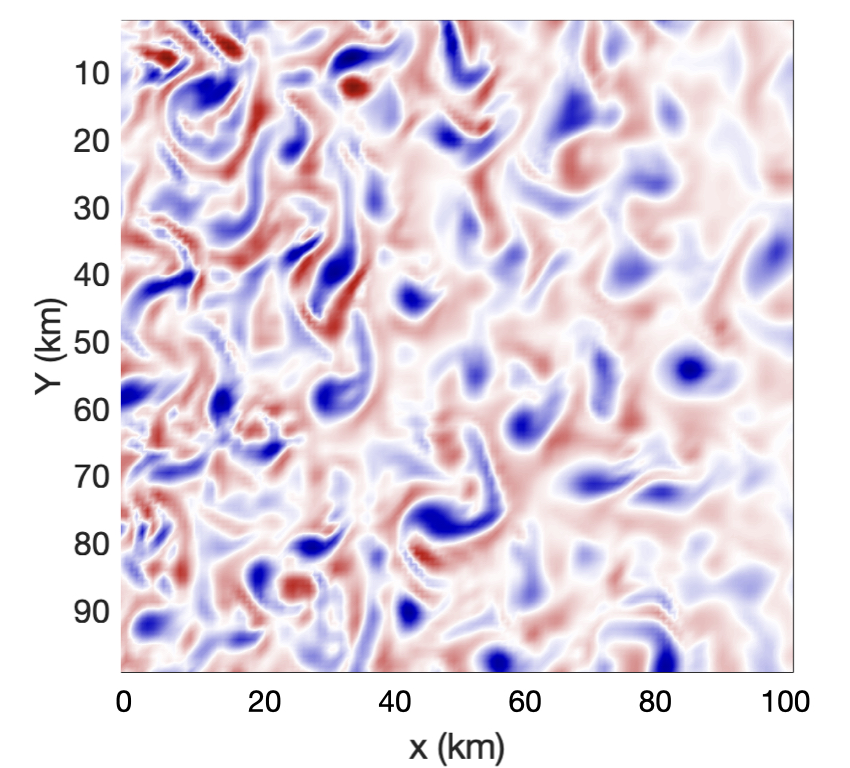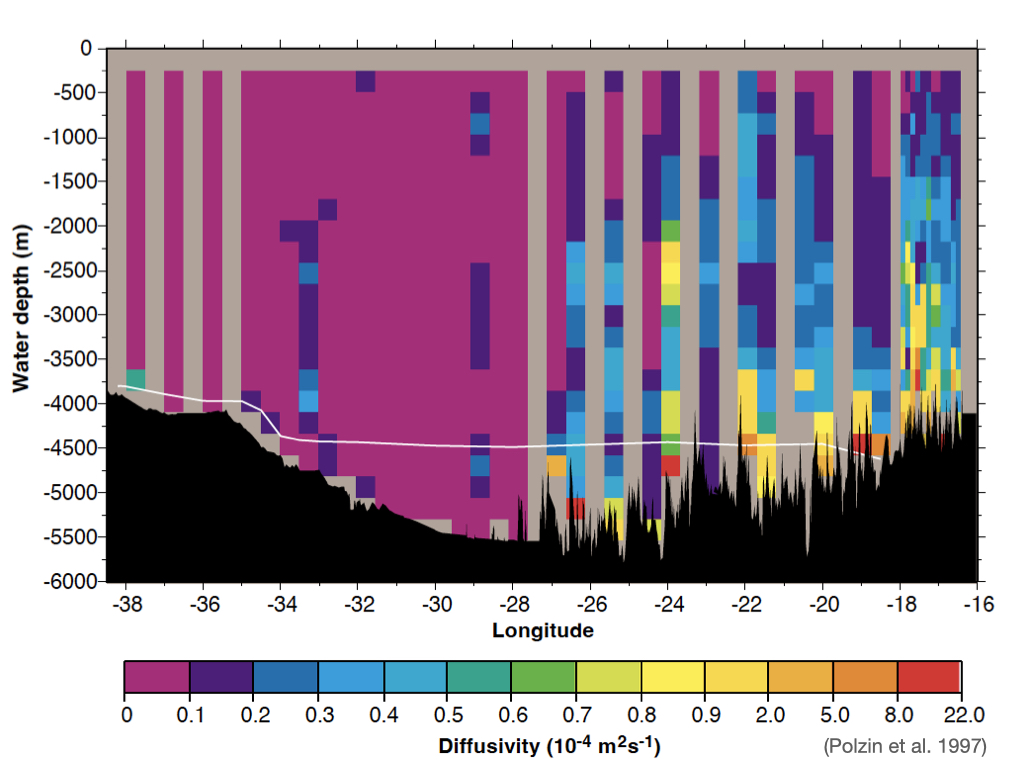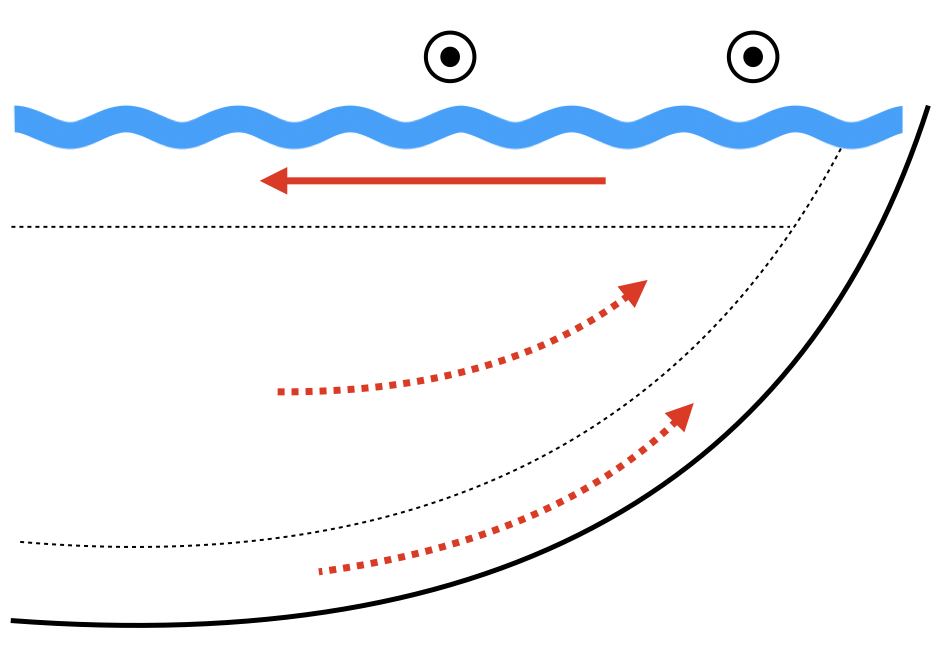Bottom Boundary Layer Dynamics
Oceanic bottom boundary layers (BBL) are thin layers above the seafloor and are characterized by enhanced velocity shear and turbulence. Processes within the BBL exert strong constraints on the energy budget of the large-scale ocean circulation and facilitate material exchanges such as heat and nutrients between the BBL and interior ocean.
Our work aims to address the dynamics and turbulent characteristics of the BBL where mean flows, stratification and sloping topography interact and we used theoretical derivations and three-dimensional large-eddy simulations (LES) as our main tools.




